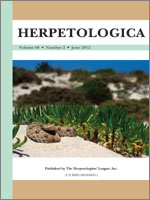In spite of Amazonia's large biodiversity, we still understand relatively little about how it evolved. Phylogeographic studies help us to understand the spatial and temporal context in the diversification of organisms, but only a few such studies have been done in Amazonia, where regional and local variation exists that may have been influenced by different events or similar events at different times. Here we test whether, and to what degree, the phylogeographic structure of faunal elements reflects a recently proposed geological scenario for the establishment of the lower Amazon–Tocantins basins in eastern Amazonia. We test an area cladogram that assumes that the Amazon River represents the first potential barrier (≥3.6 million years ago [mya]), followed by an east–west separation south of the Amazon caused by the paleo-Tocantins River (∼2.5 mya), and most recently by the shift of the lower Tocantins eastward to its present course (∼6000–8000 yr ago). We examined mtDNA (∼520 base-pairs [bp] of 16S, 815 bp of cytochrome b) of two widely distributed and distantly related lizard species, Gonatodes humeralis (Sphaerodactylidae) and Kentropyx calcarata (Teiidae). The phylogeographic structure of G. humeralis indicates that the species is characterized by deep splits between localities, preventing us from recovering well-supported relationships between populations. Kentropyx calcarata haplotype networks and our Bayesian mtDNA tree identify a number of clades that we compare through an AMOVA. The overall phylogeny of K. calcarata was partially congruent with the geological scenario, but some unforeseen relationships were also recovered. Our results reinforce the potential of phylogeographic studies to help understand the recent evolution of Amazonia, and at the same time point to the necessity of refined sampling and the use of multiple molecular markers in such studies.
How to translate text using browser tools
1 June 2012
Phylogeography of the Teiid Lizard Kentropyx calcarata and the Sphaerodactylid Gonatodes humeralis (Reptilia: Squamata): Testing A Geological Scenario for the Lower Amazon–Tocantins Basins, Amazonia, Brazil
Teresa C. S. Avila-Pires,
Daniel G. Mulcahy,
Fernanda P. Werneck,
Jack W Sites
ACCESS THE FULL ARTICLE

Herpetologica
Vol. 68 • No. 2
June 2012
Vol. 68 • No. 2
June 2012
Amazonia
Gonatodes humeralis
Kentropyx calcarata
mt-DNA
PHYLOGEOGRAPHY




